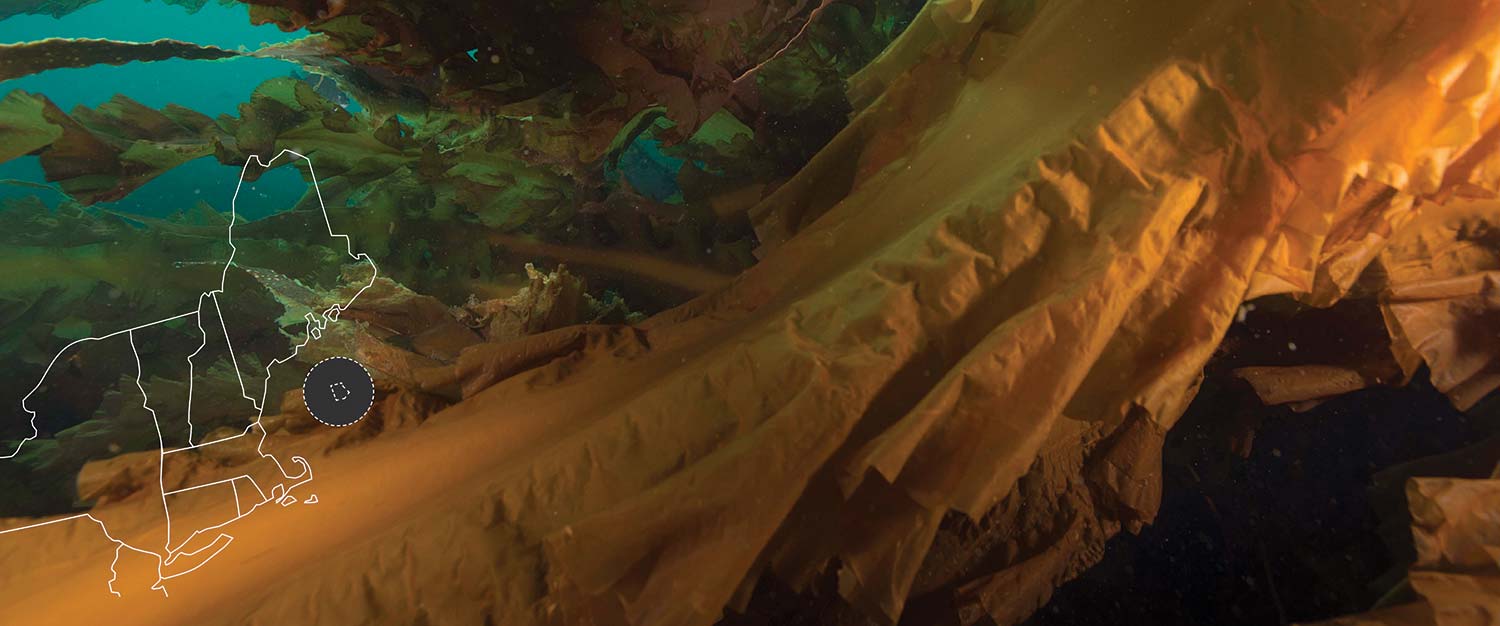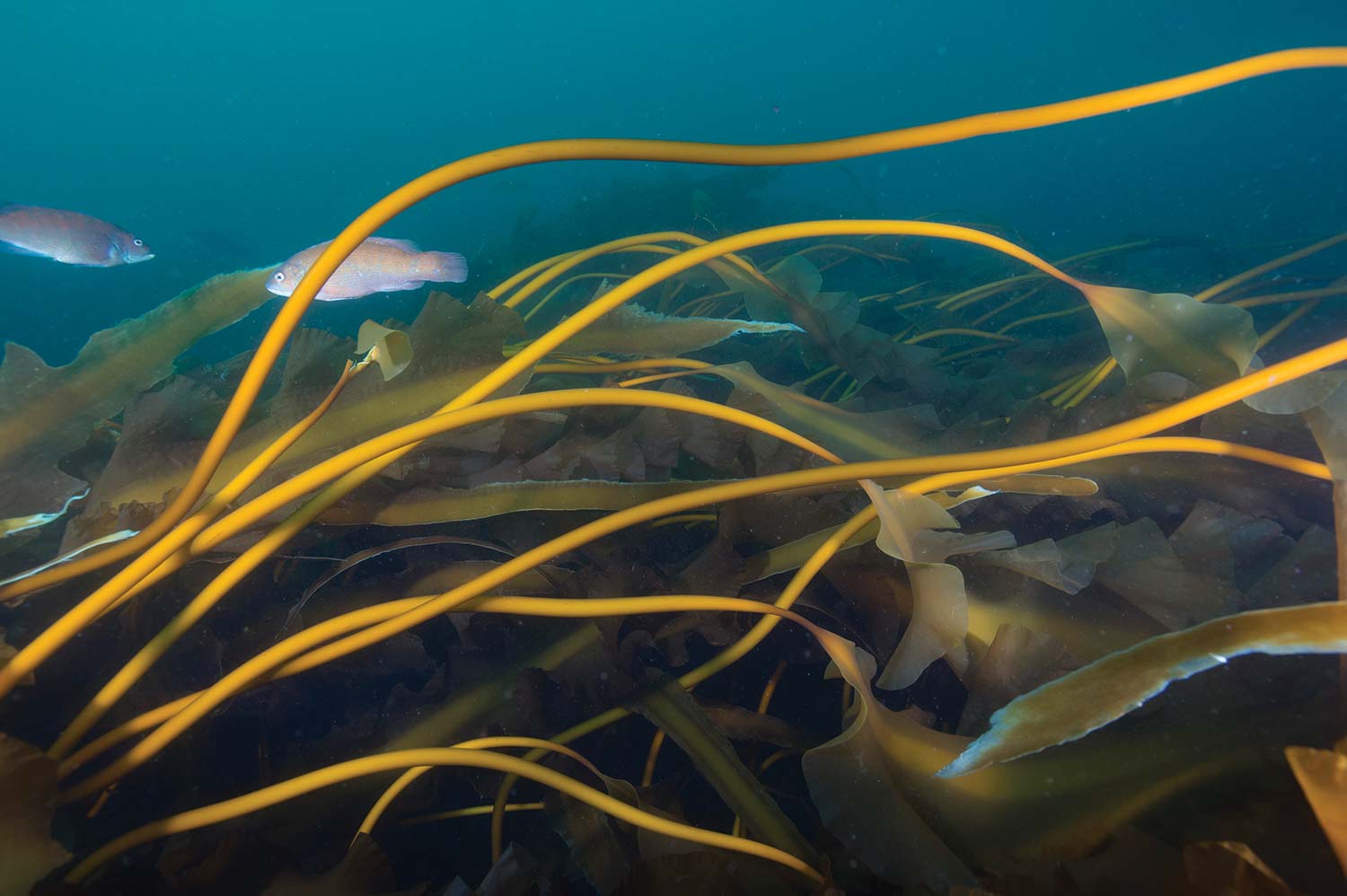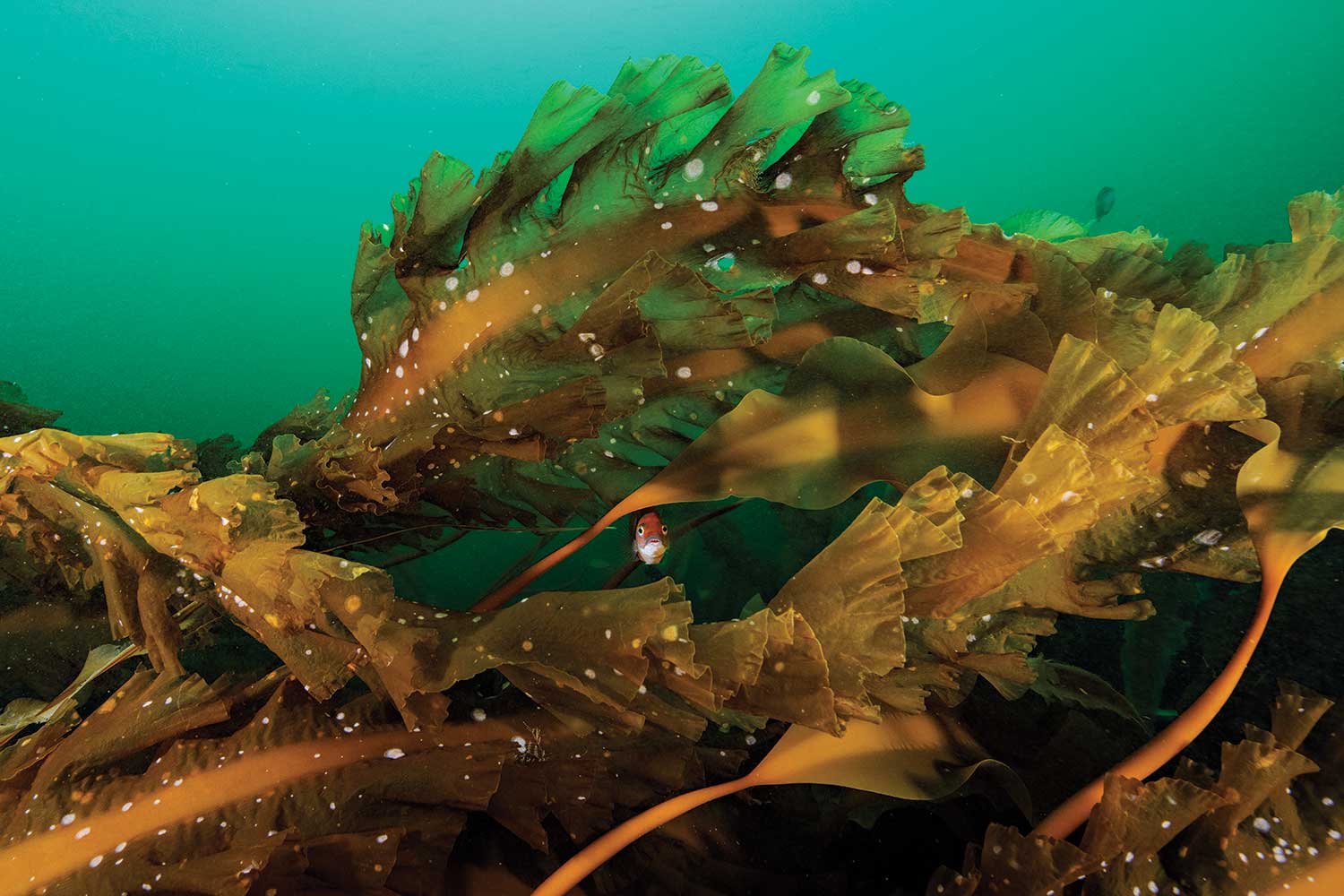Just off the coast of New England lies a thriving marine habitat of majestic beauty.
Just under 100 miles into the Gulf of Maine, an underwater mountain range called Cashes Ledge nurtures an extraordinary array of marine life. The nearly untouched rocky pinnacles, steep mountainsides, rich kelp forest, and deep basins of Cashes Ledge provide a glimpse of the historic Gulf, still thriving and mostly undamaged by human hands. Last summer, I visited this underwater treasure on a research and photography expedition, my first time back at sea since joining CLF as a senior scientist.
CLF is calling for NOAA to designate Cashes Ledge as a National Marine Sanctuary. The area’s current protections aren’t sufficient or permanent, and sanctuary status would preserve this special place for future generations. When I visited, I saw firsthand the importance of protecting this cradle of life.
Also on this week-long photo expedition was Brian Skerry, a renowned marine photojournalist who has worked with CLF for more than a decade to document this remarkable place. In this photo essay, I want to share some of the beauty the team encountered, with photos taken by Brian during this and previous expeditions.

Cashes Ledge is about a three-hour boat ride from shore. We waited for just the right window of clear skies and calm seas, then headed out to the Gulf with a team of scientists from Brown University, Brian and his videography crew, and the expedition’s support team. The research vessel (pictured below left – that’s me in front of it) would spend several days and nights at Cashes Ledge. We were fortunate to also have a smaller vessel for those of us (like me) who would stay for a shorter period of time. From above the water, Cashes Ledge might appear to be an empty stretch of ocean. Beneath those waves, however, hides a thriving, spectacular marine ecosystem.


On the first day of the expedition, we encountered a pod of humpback whales that fluked (that’s when they flip up their tails).
Brian captured the rare photo below on the left of an endangered sei whale feeding during a previous trip to the area. Minke, fin, and critically endangered North Atlantic right whales also find refuge in and around Cashes Ledge.



Cashes has the deepest and densest coldwater kelp forest in the Northwest Atlantic Ocean. It provides a crucial habitat and feeding grounds for many species, including iconic Atlantic cod (above, lower right)and the rare Atlantic wolffish (above, upper right).

The science team conducted a series of dives (below, upper right) to survey the continued abundance and health of the kelp.
They collected numerous samples (below, left), documenting beautiful and brightly colored kelp fronds up to 10 feet in length (below, lower right).
With the Gulf of Maine warming faster than 97% of the world’s oceans, it’s hard for marine life to keep up with such dramatic change. That makes protecting Cashes Ledge even more important – it can serve as a vital underwater laboratory for studying the impacts of a warming ocean on sea life.



Divers spotted sizable lobsters on their trips beneath the waves (below, lower right). These crustaceans are another species threatened by changes in their environment.
The divers saw numerous large cod (below, left), which was a wonderful development. Atlantic cod are a highly vulnerable species. Scientists say their population numbers are hovering at record lows. Large cod are particularly important for the recovery of this species since bigger, older female cod produce exponentially more eggs than smaller fish.




A few pages can’t capture the full wonder of this region, but I hope these photos offer a glimpse of what lies beneath the surface of our big, beautiful ocean, and why protecting this special place as a marine sanctuary is so important. To conserve Cashes Ledge’s unique diversity of marine life and build resilience against the impacts of our overheating planet, we must provide it permanent protection.
Get a closer look at Cashes Ledge with Brian Skerry through his NOVA special, “Sea Change: The Gulf of Maine,” now available for streaming on pbs.org.
